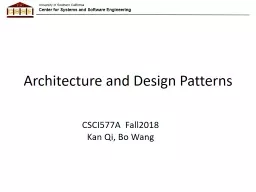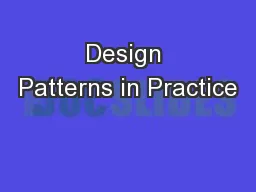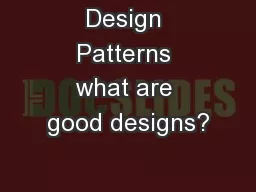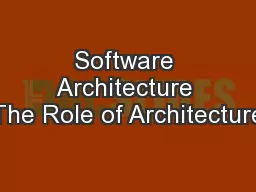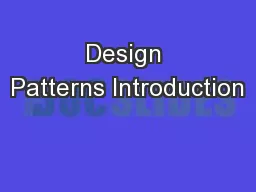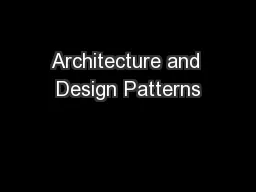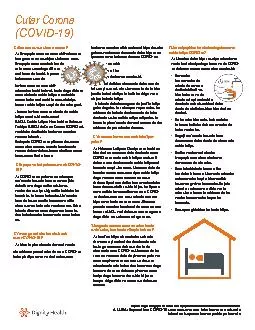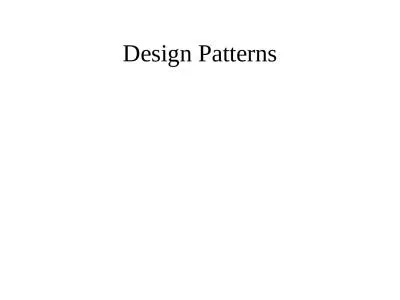PPT-Architecture and Design Patterns CSCI577A Fall2018 Kan Qi, Bo Wang
Author : alexa-scheidler | Published Date : 2019-11-05
Architecture and Design Patterns CSCI577A Fall2018 Kan Qi Bo Wang Goals of This Lecture In this lecture we will cover Terminology Architecture Styles Patterns etc
Presentation Embed Code
Download Presentation
Download Presentation The PPT/PDF document "Architecture and Design Patterns CSCI577..." is the property of its rightful owner. Permission is granted to download and print the materials on this website for personal, non-commercial use only, and to display it on your personal computer provided you do not modify the materials and that you retain all copyright notices contained in the materials. By downloading content from our website, you accept the terms of this agreement.
Architecture and Design Patterns CSCI577A Fall2018 Kan Qi, Bo Wang: Transcript
Download Rules Of Document
"Architecture and Design Patterns CSCI577A Fall2018 Kan Qi, Bo Wang"The content belongs to its owner. You may download and print it for personal use, without modification, and keep all copyright notices. By downloading, you agree to these terms.
Related Documents

